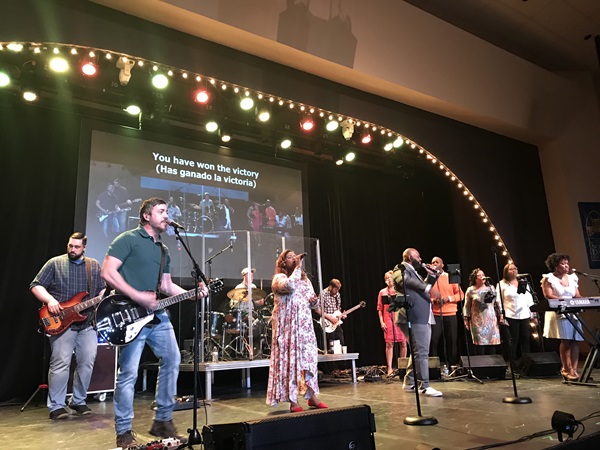Churches communicate cross-culturally most effectively when their internal ministries and leadership reflect the people they seek to reach. Diverse audiences will be more inclined to listen to congregations who have written ethnic and cultural diversity into their DNA. Garfield Memorial United Methodist Church in Cleveland, Ohio exemplifies this.
Originally a predominately-white congregation, Garfield began in 2004 to become a more welcoming home to all in its racially diverse neighborhood around it. The journey that began with the appointment of the Rev. Chip Freed as senior pastor continues today. The congregation now has around 1,200 active members with no one racial-ethnic group forming a majority.
However, being a “healthy” multiethnic church requires more than just diverse membership rolls. “Healthy multiethnic ministry means doing life together, walking in worship together,” Freed said. “We reflect our diversity at every level of the church.”
Communicating diversity internally
A church’s ability to communicate diversity internally as a spiritual discipline is vital to embodying it in the world.
“A multiethnic church is what Christ intended from the very beginning,” Freed said. “We use scripture to show how our congregation’s diversity reflects God’s kingdom. Our congregation can quote scripture (passages) on diversity in their sleep. We use Christ’s imagery of the kingdom to show our congregants how to live in God’s community today.” Garfield Memorial use scripture accounts of Pentecost, the Great Commission, Paul’s letter to the Galatians and others to show how Christianity has always been able bring together different groups in loving fellowship with one another.
It’s not enough, though, to draw examples from scripture. Churches need to speak directly to the background of their audience ways that translate Biblical and spiritual truths to modern-day experiences. “When telling stories or inserting cultural references into your preaching, be intentional about speaking to the experiences of different people and groups,” said the Rev. Terry McHugh, executive pastor.
Garfield is able to communicate multiethnically in its preaching, worship and internal communications in large part because its leadership reflects diversity. Both the church staff and lay leadership embody racial, generational and cultural diversity. McHugh describes decision-making in the congregation as collegial rather than hierarchical. Every voice is heard and affirmed
“Most of our decisions around how to communicate – from songs and graphics used in worship to web content and social media posts – are carefully vetted by our team to ensure they reflect our value of diversity,” he said.
Communicating diversity externally
Churches that live out multiethnic diversity internally are naturally able to do a better job of communicating to diverse audiences externally. Congregations best demonstrate to the world what they believe by simply showing who they are. Casual visitors will be more inclined to take statements or media on diversity more seriously when they see it reflected in the faces and voices raised in the pulpit, social media and local outreach.
As with internal communication, external communication begins with relationship building, getting to know the community around the church and listening as it tells the congregation its needs. Careful listening led Garfield Memorial to hear needs and develop outreach ministries including food pantries and afterschool reading programs. The church has provided back-to-school supplies and on-site health screenings for Cleveland’s refugee population. The church also has a free coffee truck and portable prayer station booths at community events, allowing it to take hospitality and an effective witness into the streets.
“Be sensitive and receptive in your communication to your community,” Freed said. “Empathy is critical. You have to address the pain of different people and acknowledge what people are feeling.”
Communicating multiethnically also means being an advocate for racial justice and equity in all things. It consistent witness has made Garfield a trusted voice in ongoing debates around systemic racism in law enforcement.
“Systemic racism is undergirded by both neighborhood segregation and church segregation. This means multiethnic churches are uniquely positioned to combat racism by building an alternative model of community at the grassroots level,” Freed said. “A few years ago when there was a shooting of an unarmed teen by police in Cleveland, the city turned to Garfield Memorial because they knew we were uniquely positioned to speak to everyone in the community,”
Conclusion
Multiethnic churches are best equipped to speak to issues of racial justice and harmony as they embody the message they are sending to the community in leadership, worship, fellowship and outreach. “Eighty percent of communication is non-verbal,” McHugh said. “You communicate by being who you are and who you want to be.”
Philip J. Brooks is a writer and content developer on the leader communications team at United Methodist Communications in Nashville, Tennessee, USA.

